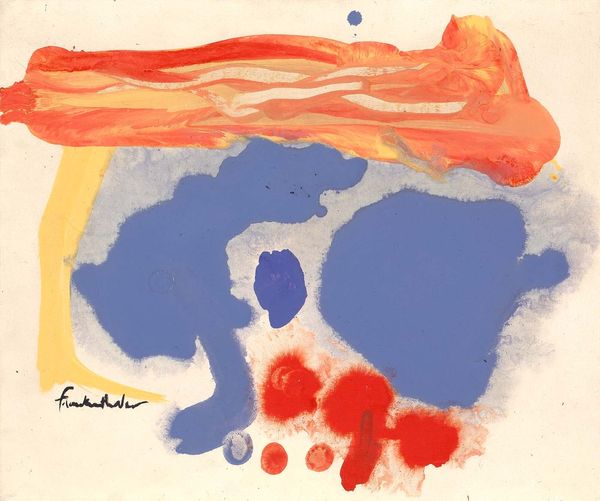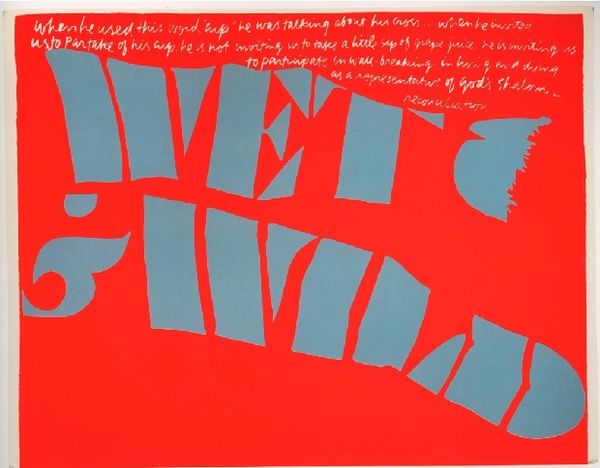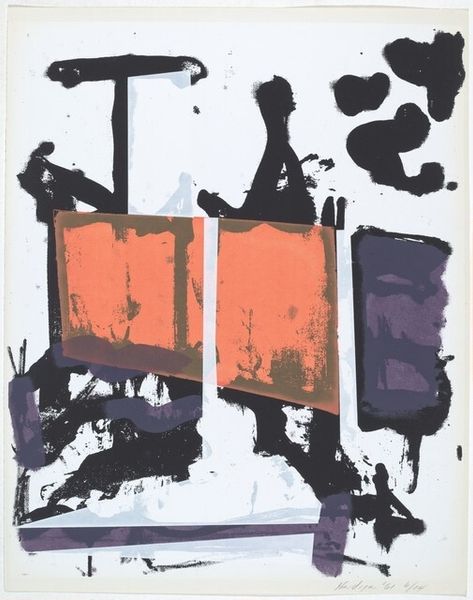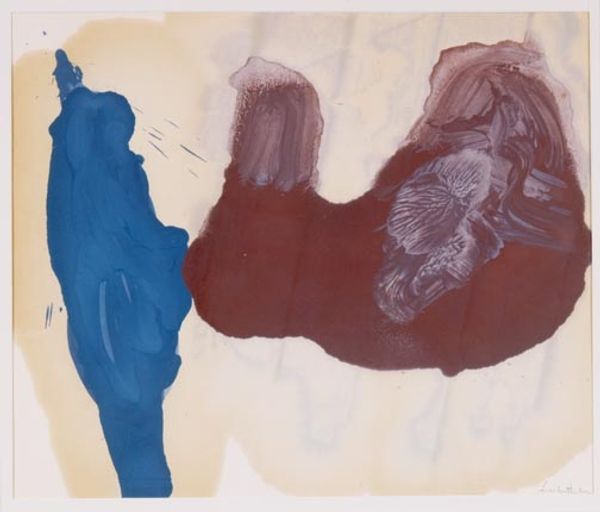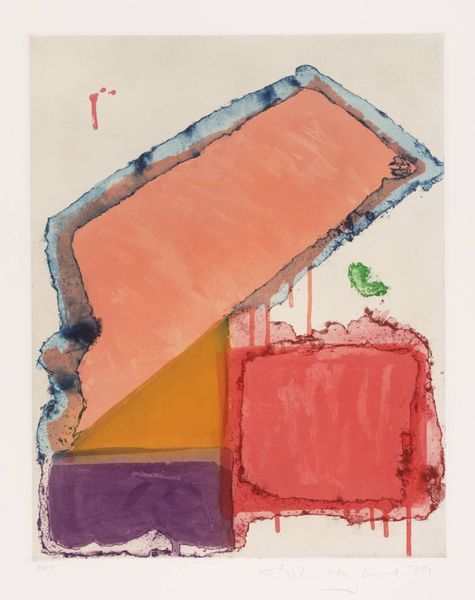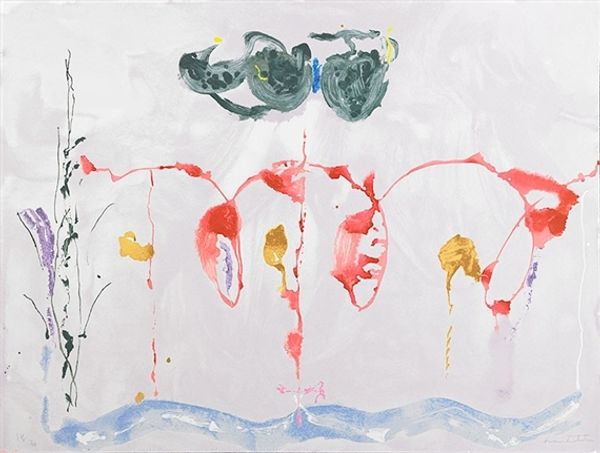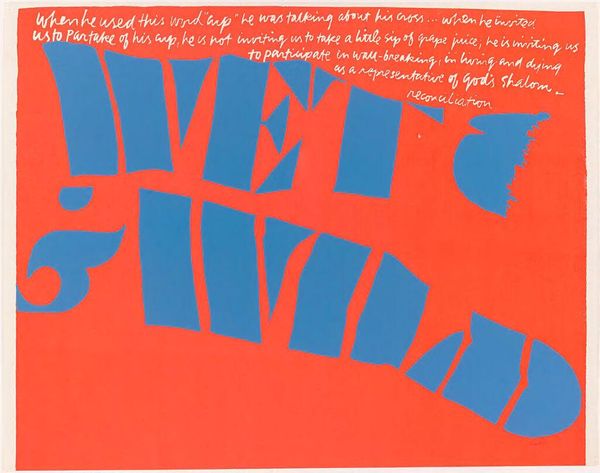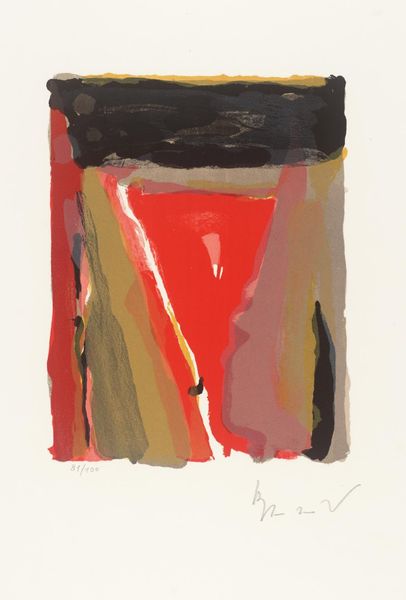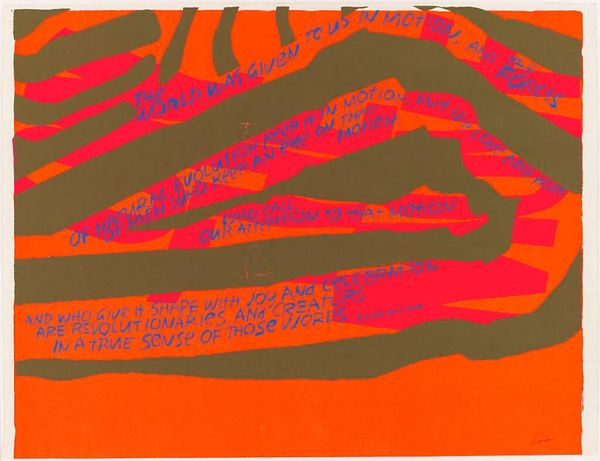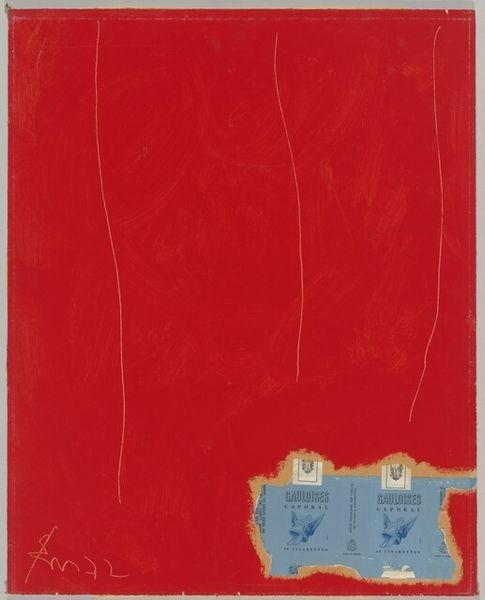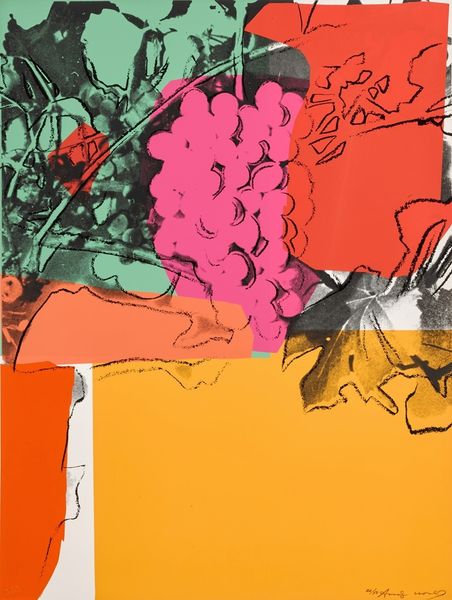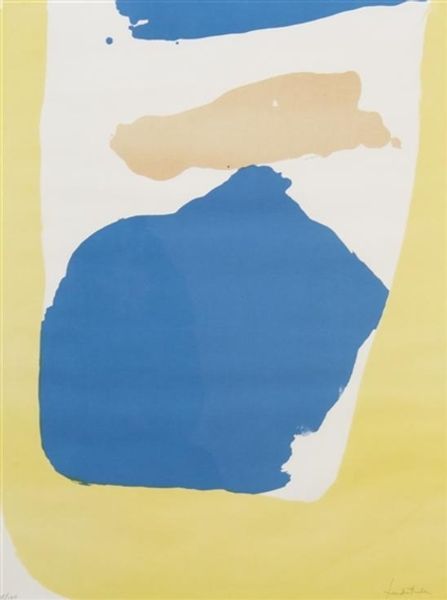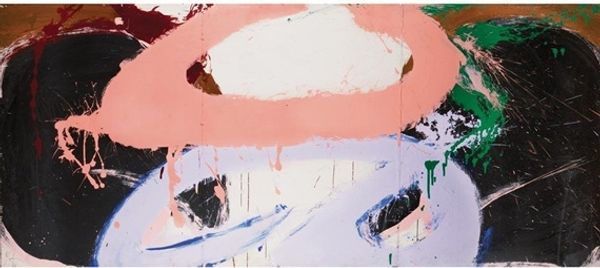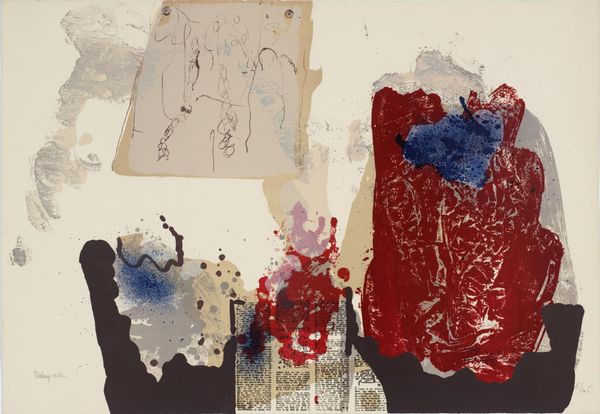
graphic-art, mixed-media, screenprint, textile, poster
#
graphic-art
#
mixed-media
#
screenprint
#
pop art
#
textile
#
abstraction
#
pop-art
#
poster
Copyright: Corita Kent,Fair Use
Editor: Corita Kent’s screenprint, "Tons of Fire," created in 1962, is such an explosion of color and textual fragments. It almost feels like a deconstructed religious poster. How do you approach interpreting this piece? Curator: I'm drawn to the processes at play here, and how they challenge traditional art-making hierarchies. Screenprinting, typically associated with mass production and popular culture, is elevated in this context. Consider the tension: Kent uses commercial techniques to convey spiritual messages. What does the layering of the text with vibrant blocks of color communicate about the making and the dissemination of information? Editor: So, it's about the conscious choice of technique and its implications? The text itself is a religious quote, but the visual treatment seems deliberately...un-devotional. Curator: Precisely. Look at the materiality. The texture of the ink, the imperfections in the print, the raw quality of the textile support if there is one... all of these material elements speak to the physical labor and industrial processes involved. It blurs the line between art object and manufactured good. Does this piece’s engagement with mass production offer any insight into society's understanding and experience of religious messaging at this time? Editor: That's fascinating. It makes you consider how the message is received because of, or in spite of, the method of production. Curator: Right. The social context informs the reading of the image. Editor: I never considered screen printing could hold so much depth! Thanks for this perspective. Curator: Indeed. It opens new ways to appreciate art. It allows us to think about production in relation to society and meaning.
Comments
No comments
Be the first to comment and join the conversation on the ultimate creative platform.
